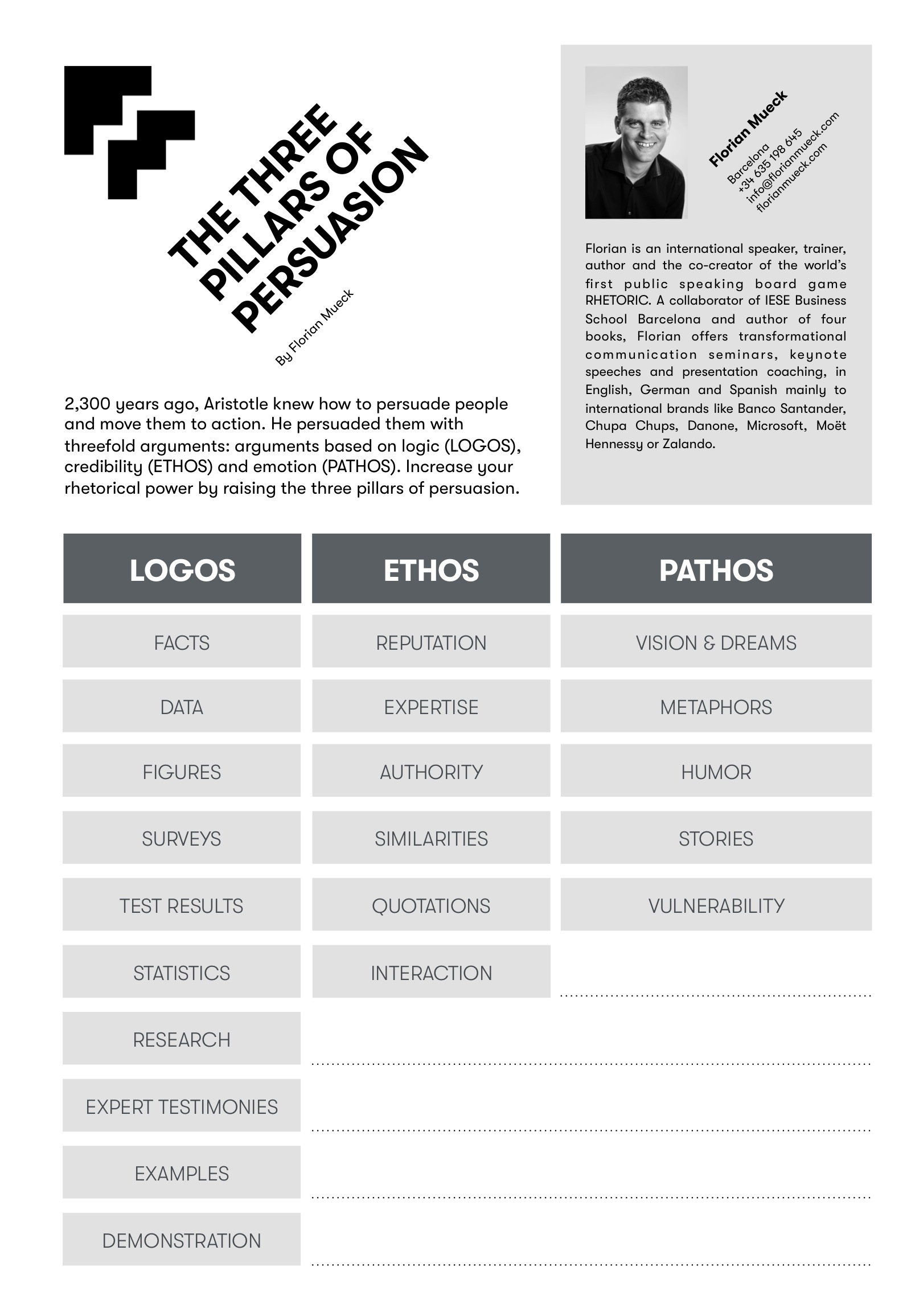One of the most influential writings for public speakers is Aristotle’s Rhetoric. In this classic treatise, Aristotle describes the three modes of persuasion. The three modes of persuasion are devices in rhetoric that classify the speaker’s appeal to the audience. They are: logos, ethos, and pathos. For visual reasons I like to refer to them as the three pillars of persuasion.
Aristotle’s Rhetoric describes the three pillars of persuasion thus:
Persuasion is clearly a sort of demonstration, since we are most fully persuaded when we consider a thing to have been demonstrated. Of the modes of persuasion furnished by the spoken word there are three kinds. […]
Persuasion is achieved by the speaker’s personal character when the speech is so spoken as to make us think him credible. (ETHOS) […] Secondly, persuasion may come through the hearers, when the speech stirs their emotions. (PATHOS) […] Thirdly, persuasion is effected through the speech itself when we have proved a truth or an apparent truth by means of the persuasive arguments suitable to the case in question. (LOGOS)
In the PDF below you find an overview of drivers and triggers for each of the three modes of persuasion. By adding them to your communication you’ll increase your rhetorical power tremendously. Just like Aristotle did 2,300 years ago.

